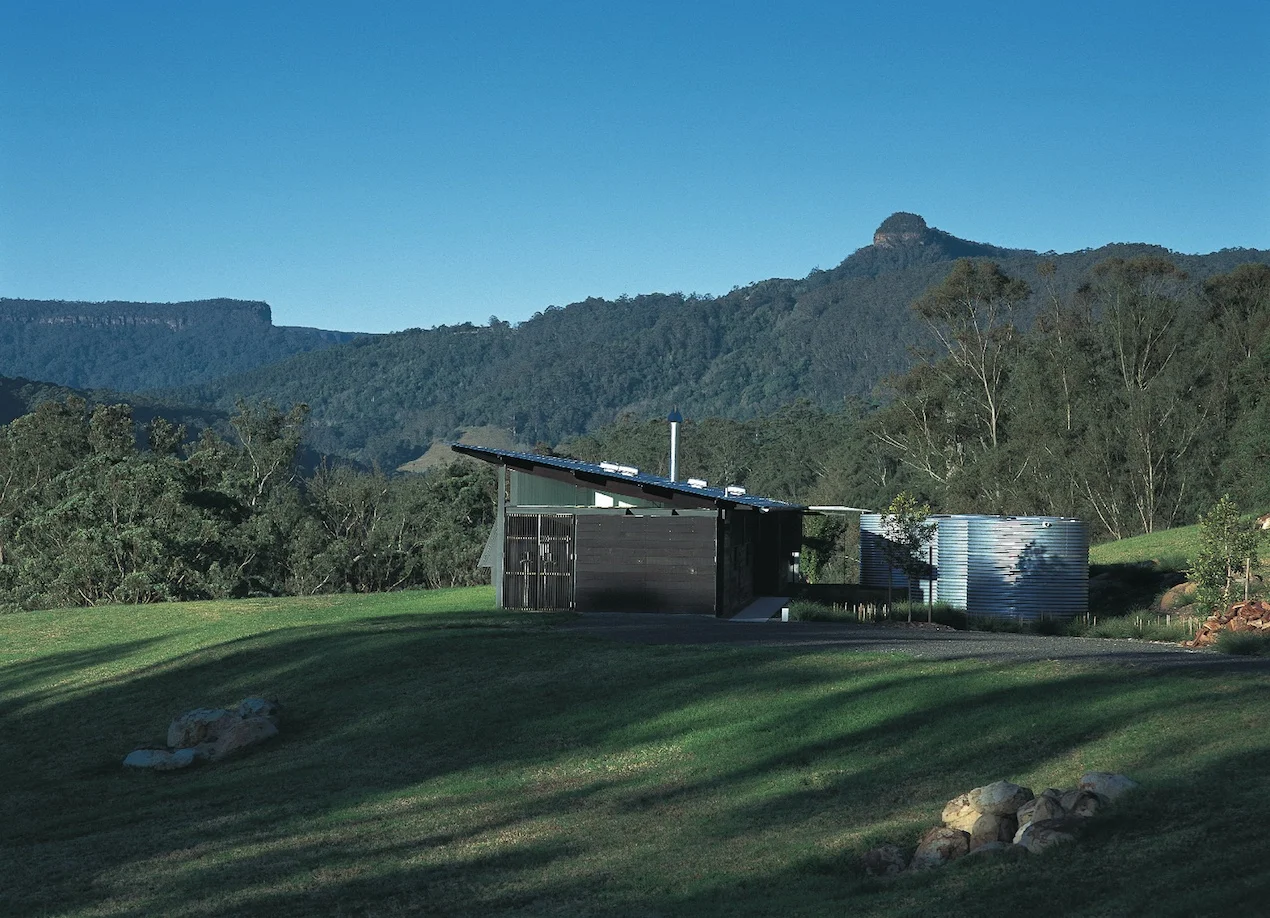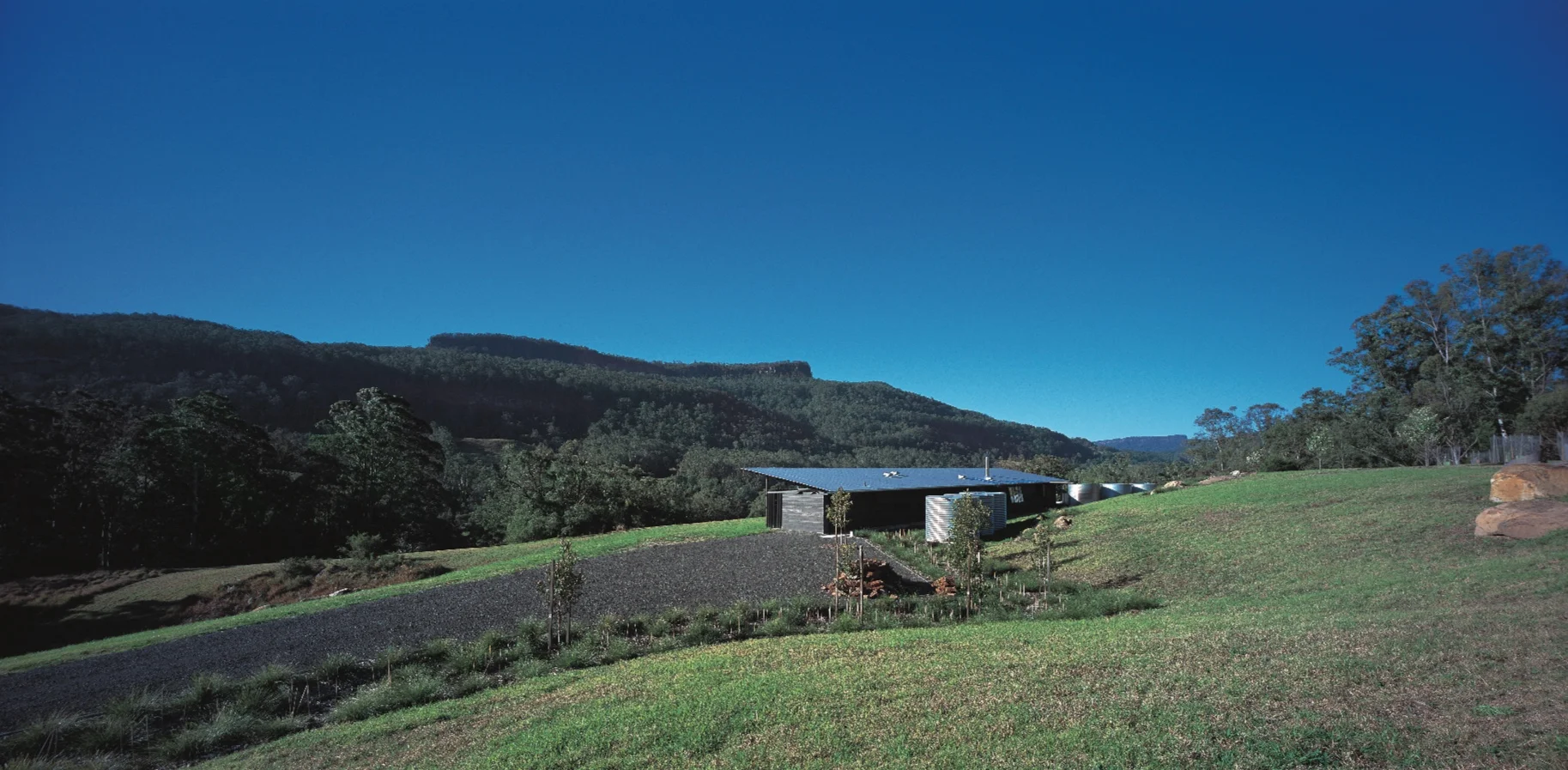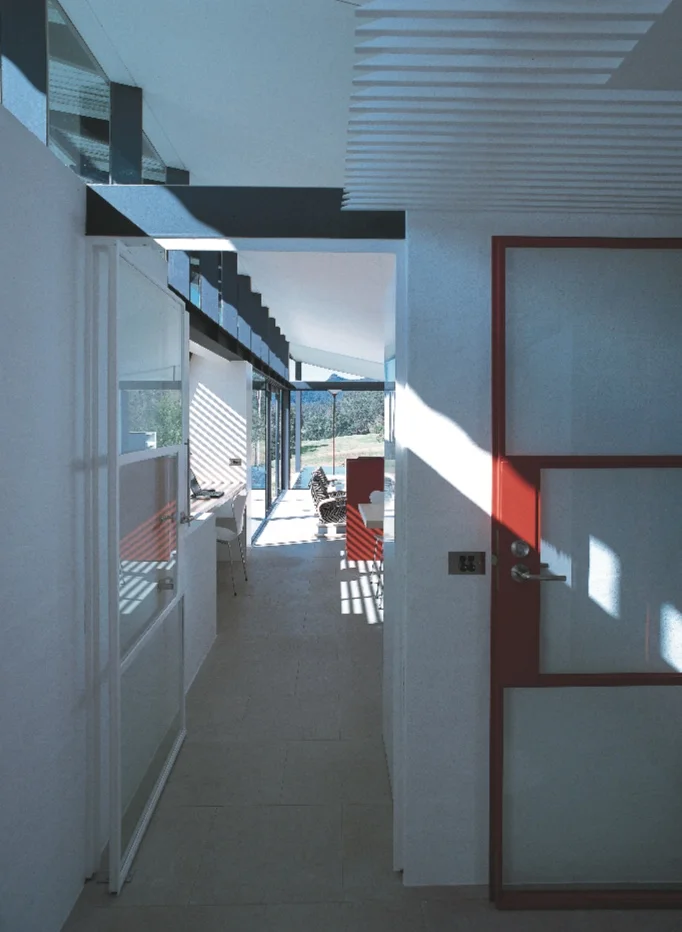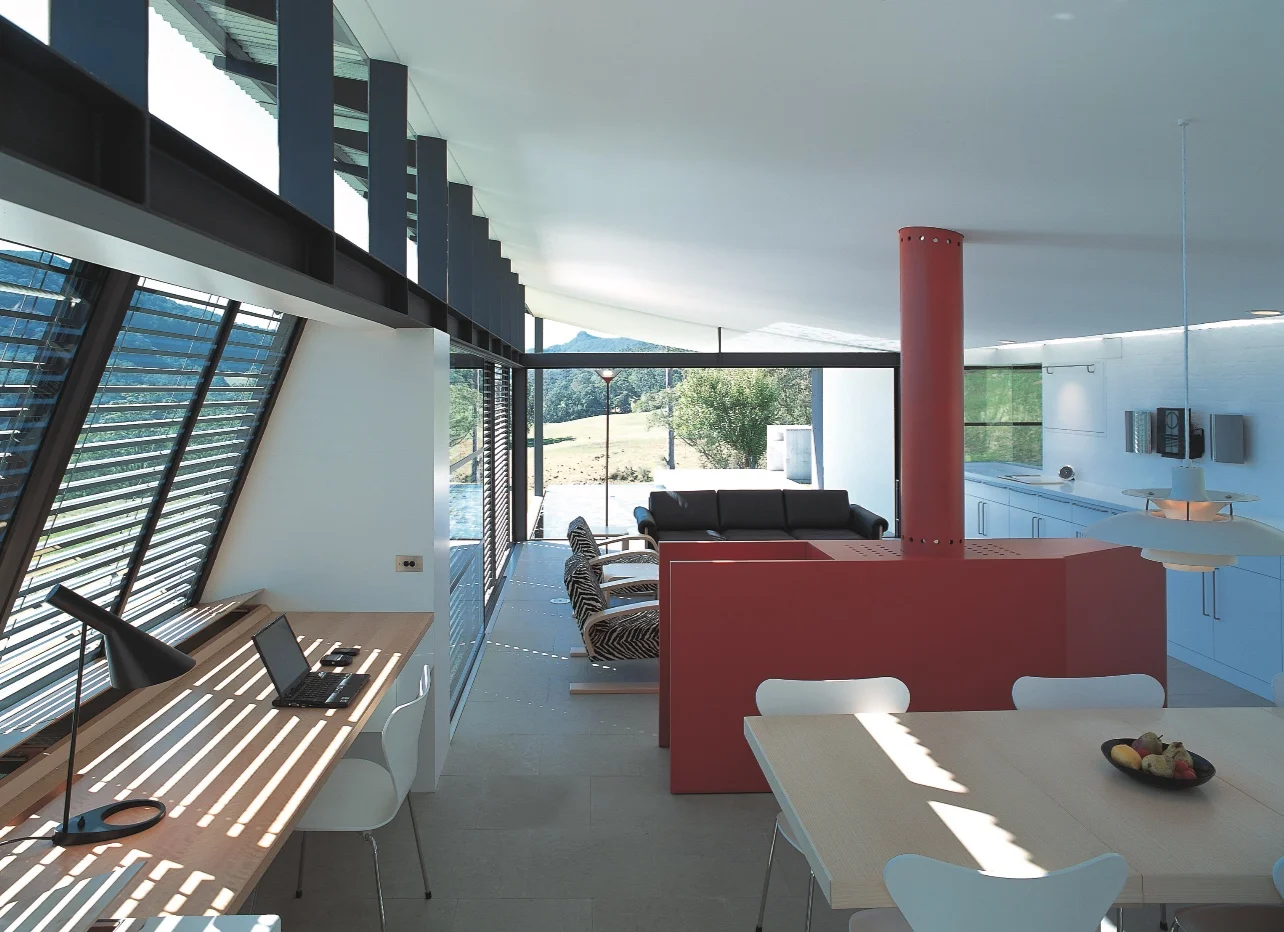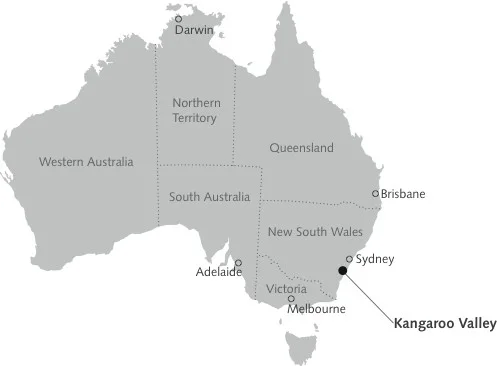Walsh House, Kangaroo Valley, New South Wales, Australia : 2001 - 05
Altitude: 100m above sea level. Temperate climate. Rainfall circa 1,500mm per year. Summer, circa 26˚C. Winter, circa 23˚C with winds off Mt. Kosciusko bringing lows of 5˚C. Decomposed sandstone soils with organic matter and clay.
The house is located in Kangaroo Valley, close to the Fletcher-Page House, with which the Walsh House has some formal similarities. Both are linear, mono-pitch pavilions of comparable dimensions. However, in their ways of use, and the ways that they engage with the landscape, the two houses are extremely different.
Walsh House stands on open grassland, with its principal façade addressing a forested ridge to its north, and with its long axis directed precisely towards a large knoll of rock in the distance, to its east.
As at a number of other houses by Murcutt, the roof projects deeply to shield the upper, north-facing windows from direct summer sun, allowing these windows to be unscreened, and to frame the view of the ridge clearly throughout the year. However, unlike Simpson-Lee House, for example, Walsh House is not conceived as a single, fluid, interior space but as a series of connected rooms, each clearly identified from the outside by an individual glazed bay, protected by adjustable louvres, which allows the user to individually adjust the daylighting of their room. Each bay is intended for variable use, as for example a day-bed, writing desk, or small greenhouse.
The house presents four very different faces. Its southern and western elevations, facing the cold south-western winds of winter, have the character of a working farmhouse, crafted in rustic materials, with a few windows. The northern and eastern façades are of far more refined materials and detailing, and are more open to the luxuriant surrounding view.
The dining room/kitchen is the only room in the house with both a northerly and southerly aspect. The large southern window frames a view of the ancient tree which surmounts the adjacent hillock, and a small corner window frames a selected, diagonal south-easterly view, past the water tanks, which reveals the sloping form of the land. The two ultimate windows of the north façade can be slid back, and the glazed eastern end-wall can be slid completely away to the south side of the house. This both unites the sitting room with the veranda and sets up a north-easterly diagonal view across a shallow, tranquil pond which plays reflected patterns of sunlight onto the canopy ceiling, and tempers the heat of the summer air.
Text and images taken from ‘The Architecture of Glenn Murcutt’ and ‘Thinking Drawing / Working Drawing’ published by TOTO, Japan, 2008. Photos : Anthony Browell. Text : Heneghan, Gusheh, Lassen, Seyama.

